Home | Tours | Trip Reports | News | Team | Calendar | Links | Contact | Store | Mailing List

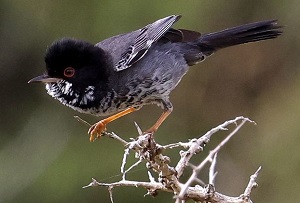 CYPRUS
CYPRUSSpecialties of the
Eastern Mediterranean
April 18 - 24, 2026
Contact [email protected] to reserve your space!
Trip Cost & Travel Planning> Registration Form>
Tour
Registration, Terms,
Cancellation Policies>
BIRDING IN CYPRUS - Slides by Stylianos Zannetos (pdf)>
Situated in the eastern Mediterranean, the island nation of Cyprus is fast becoming known as a fantastic birding destination boasting more than 420 species of birds. The island’s enviable bird list includes species that occur nowhere else in the world including Cyprus Scops-Owl, Cyprus Wheatear, and Cyprus Warbler, the island’s national bird. Add to that specialties like Black Francolin and a host of passage migrants traveling north over the island to their breeding grounds in early April and you have a fabulous tour complete with beautiful cultural and historical sites that offer great birding as well !
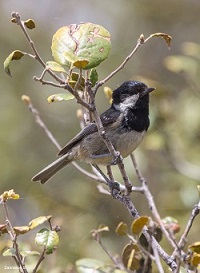 Our friend and local guide Stylianos Zannetos has put together this new itinerary which explores the diverse habitats of Cyprus to seek out their avian inhabitants. You’ll marvel at picturesque valleys and rugged headlands, and we’ll bird saltpans, reservoirs, freshwater pools, and pine forests to see out the assortment of northern and eastern European migrants and special birds that Cyprus has to offer. We’ll also look for the unique butterflies, plants and orchids of Cyprus. This is an easy, two-center holiday with exceptional daily birding with waterfowl, waders, crakes, and passerines in our sights.
Our friend and local guide Stylianos Zannetos has put together this new itinerary which explores the diverse habitats of Cyprus to seek out their avian inhabitants. You’ll marvel at picturesque valleys and rugged headlands, and we’ll bird saltpans, reservoirs, freshwater pools, and pine forests to see out the assortment of northern and eastern European migrants and special birds that Cyprus has to offer. We’ll also look for the unique butterflies, plants and orchids of Cyprus. This is an easy, two-center holiday with exceptional daily birding with waterfowl, waders, crakes, and passerines in our sights.
Our visit to Cyprus supports conservation efforts through wildlife tourism. Stylianos will help us understand programs aimed at protecting the birds and important habitats on his beloved island.
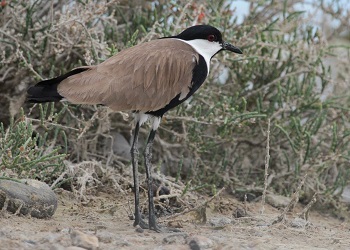 ITINERARY
ITINERARY
Day 1
After arrival at Larnaca International Airport (LCA) we will drive to our hotel situated next to Oroklini Marsh, just 20 km from the airport. Time permitting, we will walk to the marsh for a first taste of spring migration in Cyprus. Oroklini Marsh holds a good number of breeding pairs of Spur-winged Plovers and Black-winged Stilts. The last two years Red-crested Pochards and Ferruginous Duck have also been breeding there. We’ll also listed for Black Francolins calling from the adjacent agricultural fields.
Day 2
Before breakfast we will have the opportunity to visit Oroklini Marsh in search of Little Crakes. After breakfast, we will head towards the hotspot of spring migration in Cyprus, the well-known Cape Greco, a headland situated in the 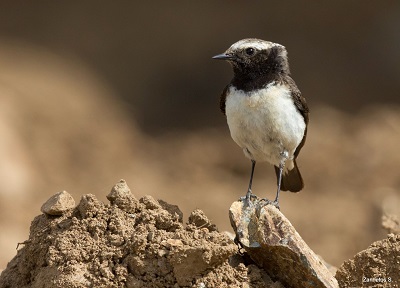 southeastern part of the island. Cape Greco is an important migration site for everything from birds of prey, to herons, to passerines, to gulls. The area is mostly covered by scrub vegetation which offers protection for migrating passerines. We will take a walk around the area to search for the endemic passerines of Cyprus, Cyprus Warbler and Cyprus Wheatear, as well as other important warblers of the area such as Rüppell’s, Sardinian, and Spectacled. It is worth checking the shoreline for the Audouin’s Gulls. We will also visit the amazing sea caves, an important place for the breeding of the endangered Mediterranean Monk Seal, which is very difficult to see, but we will also search the rocky habitat for wheatears and larks. On our way back to the hotel, we will visit Paralimni Lake where we will have the opportunity to search for migrating waders such as Curlew Sandpipers and Spotted Redshanks. We may also see a variety of tern species like Whiskered, White-winged, and the rare Black Tern.
southeastern part of the island. Cape Greco is an important migration site for everything from birds of prey, to herons, to passerines, to gulls. The area is mostly covered by scrub vegetation which offers protection for migrating passerines. We will take a walk around the area to search for the endemic passerines of Cyprus, Cyprus Warbler and Cyprus Wheatear, as well as other important warblers of the area such as Rüppell’s, Sardinian, and Spectacled. It is worth checking the shoreline for the Audouin’s Gulls. We will also visit the amazing sea caves, an important place for the breeding of the endangered Mediterranean Monk Seal, which is very difficult to see, but we will also search the rocky habitat for wheatears and larks. On our way back to the hotel, we will visit Paralimni Lake where we will have the opportunity to search for migrating waders such as Curlew Sandpipers and Spotted Redshanks. We may also see a variety of tern species like Whiskered, White-winged, and the rare Black Tern.
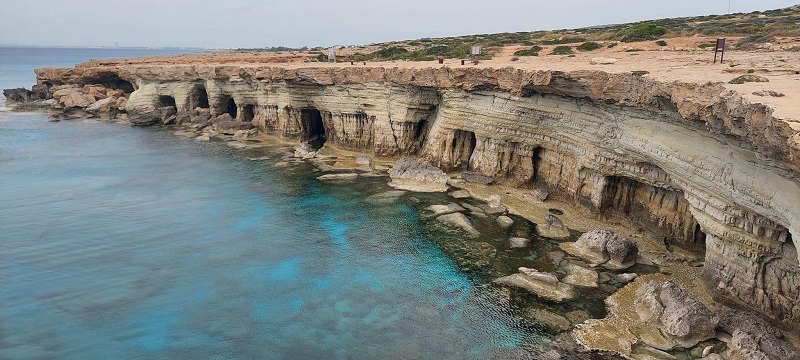
Day 3
This morning after breakfast, we will have a 45-minute drive to the Akrotiri peninsula near Limassol. Our first stop will be Akrotiri Marsh which is an area with freshwater marsh and reed beds. We will drive along the marsh area making stops to look for waders feeding at the muddy edges of reeds including Great Snipe, Temminck’s Stint and sometimes flocks of Collared Pranticoles and terns. Little, Spotted and Baillon’s Crake could be found in spring as well as a variety of heron and egrets. The grassy areas that are grazed by livestock attract Yellow Wagtails and pipit flocks. Hoopoes and Rollers are possible as well as migrating Red-footed Falcons, European Honey Buzzards and Short-toed Snake Eagles.
We will then search the Akrotiri gravel pits for Cream-colored Courser and Broad-billed Sandpipers which would be amazing birds for our list. After the gravel pits, will drive along the coastal road called the “Lady’s Mile” which is an area with coastal dunes and mud flats heading towards the Zakaki Marsh hide. During our drive we will look for Kentish plovers and other waders feeding. At the Zakaki Marsh we will hope for good views of Little Bitterns, crakes, and Squacco Herons. Our last stop for the Limassol area will be the Kensington cliffs above the well-known Zapalo Bay near Episkopi village. Here we will enjoy amazing views of the cliffs with the opportunity to see Griffon Vultures (they are very few so we need luck), Peregrine Falcon, and Alpine Swifts flying in eye level view.
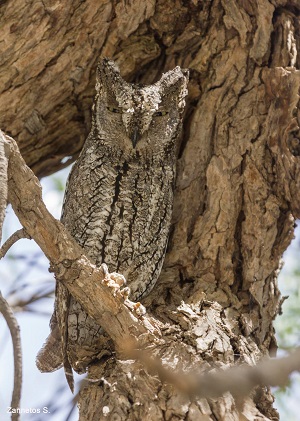 Day 4
Day 4
Our day will be mostly spent on Troodos mountains, including the peak of Olympos at 1900m and a coniferous forest dominated by Black and Calabrian pines. We will make our fist stop at the botanical garden at Amiantos where we can enjoy some of the endemic species of plant of Cyprus. We will look for the endemic subspecies of Coal Tit, Cyprus Wheatears, Serin and, of course, the glaszneri race of Eurasian Jay. We will also stop at Almirolivado (bog) picnic site, the place to see Masked Shrikes breeding, search for the dorotheae sub-species of Short-toed Treecreeper and, if we are lucky, Red Crossbills will fly above us. After that we will go to the main square where there are some traditional shops and a nice trail to walk and look for Swifts, Crossbills, Cyprus Scops Owl, Short-toed Treecreepers and others. We’ll keep an eye skyward for Crag Martins and Pallid Swifts.
Day 5
Today we will have approximately a 90 minute drive towards the Paphos area. Before the city of Paphos, we will exit the highway and make our first stop at Agia Varvara ‘soakways’, three manmade pools with grassy vegetation and reeds suitable area for crakes, herons and Great Reed Warblers. The adjacent area is mostly agricultural with some rocky slopes, great habitat for Lesser Kestrels, Red-footed Falcons, Chukar, Black Francolin, and Bonelli’s Eagle – one of the highlight species of Cyprus. There should be Bee-eaters, and Shrikes and Agia Varvara holds also several species of dragonflies!
After Agia Varvara we will visit Kato Paphos which is the main touristic area of the city. We will park our vans and then walk towards the ancient castle next to the harbor. There we will find the footpath heading toward the lighthouse of Paphos and the archaeological area with the ancient ruins and mosaic. The coastal walk overlooks mainly rocky shores where you can find migrating passerines and waders as well as migrating flocks of herons. Some more special birds of that area in Spring are the Greater Sand Plover and Slender–billed Gull.
Day 6
Our day will start form the Larnaka Salt Lake where we can enjoy the saline landscape from the Hala Sultan Tekke Mosque as we explore the area. Our next stop will be the Meneou salt lakes and Sewage pools to search for terns, gulls and waders. We can then make another visit to Akrotiri peninsula in Limassol or Cape Greco or Oroklini Marsh depending on the birding.
Day 7
On the last day will stay locally and do some bird watching before heading to the airport.
Leaders: Stylianos Zannetos, Steve Bird, & Gina Nichol
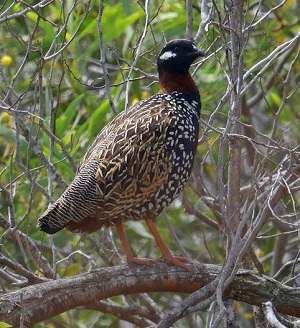 CYPRUS CYPRUSSpecialties of the Eastern Mediterranean April 18 - 24, 2026 Contact [email protected] to reserve your space! Registration Form> TOUR PRICE: $2495 per person, based on double occupancy and a minimum of 8 persons from Larnaca International Airport (LCA). Single
supplement: $395.00 per person based on availability Deposit: $750.00
per person
per tour.
Note:
Tour deposits
can be
paid by
credit
card via
PayPal.
Use this link to
make your credit card payment. Please
advise [email protected]
when you have made payment. Included in cost: All
accommodations,
meals during the tour,
and guide
services
as stated
in the
itinerary,
private
ground
transportation
during
the tour,
and park
entrance
fees. Not included: International flights, tipping for drivers and guides, travel insurance, excess baggage charges, private excursions, à la carte dishes, snacks, drinks, laundry, telephone calls and anything else of a purely personal nature. Also, any and all costs arising from pandemic or Covid-19 related issues are not included in the tour cost and are the sole responsibility of the traveler. These include, among others, the costs of Covid treatment, hospitalization, medical fees, transport, meals and accommodation in case of illness or quarantine, and the costs of any Covid tests needed before, during and after the tour.
Once
the tour is
confirmed to
go ahead, we
will send you
information
about booking
your flights.
**Please
note: Tour prices
are based on
quoted costs
from ground operators
(in their local
currency), estimated
fuel costs, and
the rate of exchange
the time of itinerary
publication.
The erratic nature
to global financial
markets makes
it difficult
to predict changes
in costs and
foreign currency
exchange rates
over the long
term. Since tours
are priced well
in advance of
the actual operation
of the tour,
tour costs, fuel
costs and exchange
rates can change,
sometimes drastically.
Depending on
the extent of
such changes,
it may be necessary
to implement
a surcharge on
this tour. If
a surcharge is
necessary, every
effort will be
made to minimize
the amount. Cancellations
and Refunds:
TRIP INSURANCE: PLEASE NOTE:
|
Phone: 203.453.6724